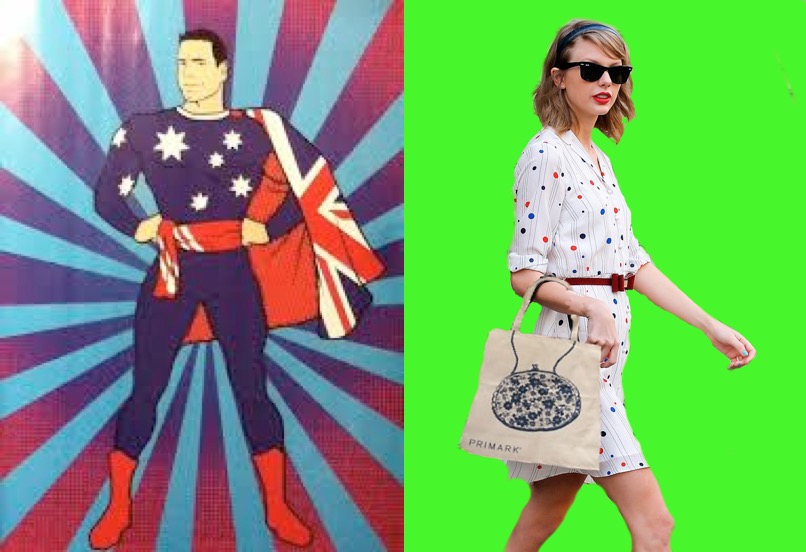Boycott or buy from Primark? How to make adolescents care more about sustainability and how you can profit from it.
Relevant topics Archive, Strategy
What is the real price of your clothing? Getting your hands on a six dollar t-shirt is inexpensive, but who actually pays for it?
Recently, a clothing factory in Bangladesh collapsed, instantly killing thousands of low-wage workers. The disaster caused public outcry; never again shall we buy from brands that expose people to such miserable circumstances. Yet in reality, Primark remains one of Europe’s most popular clothing outlets.
Clearly, attitudes and behavior are two different things. Especially in the case of adolescents, to talk the talk, doesn’t mean you walk the walk. To marketers, adolescents are a large and worthwhile segment. They value status, their friends’ opinion and as just investigated, sustainability.
But how to make a sustainable approach stick with today’s youth? Recent psychological research has solved the mystery of unsustainable teens.
Why teens say they act sustainable, but don’t
Adolescents strive for (short-term) hedonic goals such as having fun, youthfulness and carelessness. Their brains are literally attuned to the short-term pleasures of life. And here’s the problem: sustainability, a long-term issue, doesn’t fit well with these hedonic goals. However, teen self-reports state that a majority is in fact concerned with sustainability (note again: self-report, not actual consumption behavior).
To make matters worse, teenagers don’t feel their behavior matters. Over 50% of today’s teenagers believe their consumption choices have no implications for social sustainability (e.g., concerns about products’ origin, human rights and CSR. Not the physical environment or personal well-being aspects, such as health). Research concluded that peer pressure, ease, costs, lack of fun and lack of knowledge let teenagers often tip to the non-sustainable side of the scale. Like teens do, they say and think one thing, but act completely different.
Now we’ve swallowed the bad news, let’s move on to the good news. Science provides an answer on how to effectively target and communicate towards teenagers, in order to encourage them to consume more sustainably. So let us break it down for you.
Step 1- Know who you’re dealing with: the three types of teenage consumers
According to Autio and colleagues, there are three types of teenage consumers with respect to sustainable behavior:
- Anti-hero: The kind that thinks throwing an empty can of coke on the sidewalk is cool. While anti-heroes are aware of sustainable consumption, they consciously rebel against it by being environmentally unfriendly. He can be triggered by factors that make the product fun, without emphasizing that it is a sustainable product. In the rare case an anti-hero purchases a sustainable item, he does so in spite of the product’s sustainability, regarding it a mere side-effect of an otherwise cool brand.
- Anarchist: Hates and loves with passion. Anarchists boycott certain brands and products, but can be triggered by so-called flanker brands. That is, a sister-brand guised under a different name and identity. The negative association with the boycotted brand can thus be tackled by introducing an additional brand. For instance, a sustainable fashion brand launched under a new label.
- Hero: A hero acts on his concerns and is proud of doing so. His repertoire consists of recycling, use of environmentally shopping bags and not littering. He can be provoked by clearly communicating his sustainable contribution(s). Heroes don’t shy away from publicly displaying their environmentally conscious behavior. As such, they can be a living and breathing ad for sustainable brands.
The implications for sustainable brands are clear: target and display the heroes, satisfy the anarchists and avoid the anti-heroes.
Step 2- Communicate fun and ease
Teenagers are especially receptive to two things: fun and easiness. These are the key points to bridge the gap between wanting to behave sustainably.
You can win over teenage hearts by advertising your product as being sustainable and easy to use at the same time. This strategy sparks their belief system (e.g., ‘I value sustainability’) and need for convenience. A perfect example is the durable shopper. Lots of companies produce sustainable shopping bags, which teens see as trendy nowadays. With a durable shopping bag disposable plastic bags – produced for one time usage – are superfluous. Moreover, having one permanent shopping bag, saves a few bucks for not having to buy a new plastic bag every time. Furthermore, when a teen role model like Taylor Swift acts as a ‘hero’ (conspicuously sustainable), a trend can be born. As is often the case with trends, the accompanied psychological ‘need to belong’ and peer pressure can serve as motivators to engage in sustainable behavior.

Super hero Taylor Swift with a sustainable shopper bag from Primark (photo: edit).
Step 3- Costs
Whereas sustainable products targeted at adults fare quite well at a premium price, this is not the case in the teenage world.
Marketers should try and keep their sustainable product competitive as compared to non-sustainable products. Note that it also costs teenagers their self-worth if they can’t keep up with the trends.
It helps to communicate vividly how the prices came about to increase acceptance. Show how the few extra cents help to preserve nature and humanity.
Step 4- Picture a better world
Extending the previous paragraph, it works wonders to picture how consuming a sustainable product makes the world better. Plain and simple.
Try to make tangible how a sustainable products makes the world a little bit better, either physically or socially. By bringing a teen’s individual action down to its direct consequences, you combat the passivity and diffusion of responsibility teens are so well known for.
An example is a Dutch company called ‘Kromkommer’. They make soups from the poor vegetables that are crooked and thrown away for their looks. If you buy one of these soups, the package congratulates you for being a true vegetable hero and vividly communicates how you’re saving 500 grams of skewed tomatoes.
Be the one to start a trend
How can a company’s sustainable message be taken seriously by the ever-sceptical consumer? The answer is simple: start the movement, don’t follow it.
Companies that are first are perceived as genuine, while companies that come in second may even be adversely labelled as greenwashing. Trendsetting companies spark other companies to follow and importantly, the consumer will want to be part of the social trend. Remind yourself that teens are among the most sustainable of all your markets, ‘cause they could be the ones buying your brand for a lifetime.

